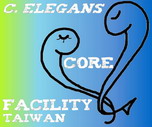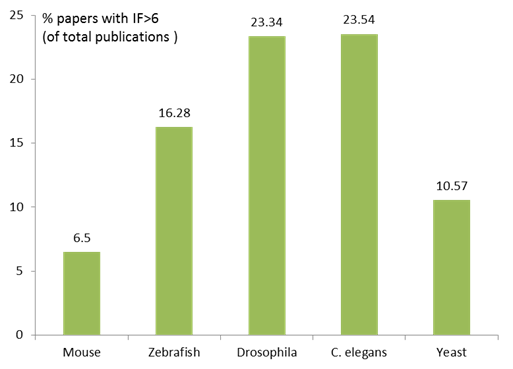
| |
| welcome |
| goals and missions |
| overview of services |
| announcements |
| E-learning |
| database (login) |
| contact us |
sssearch this site:
| Goals and Mission |
The nematode worm Caenorhabditis elegans is an excellent tool for biological studies: sequenced genome, transparent embryo and adults, ease of carrying out genetic analyses, 3-day life cycle, complete lineage map of the total 959 cells, complete wiring diagram of the nervous system with all 302 neurons and their interconnections. C. elegans exhibits complex behavior patterns and is capable of rudimentary learning, possessing genes for most of the known molecular components of vertebrate brains. Neural structures include a battery of sense organs in the head that mediates responses to taste, smell, temperature and touch. C. elegans is easy to be maintained and mutant strains can be frozen at -80°C retaining impressively high viability when thawing them even after years. Since the foundation of the C. elegans core facility (CECF) in 2007, the number of labs in Taiwan using C. elegans has been increased by a factor of 10. The goal of the CECF is to enhance the scope and quality of scientific research in Taiwan and to improve communication amongst scientists and students on methods, the latest equipment and knowledge on C. elegans research. While supporting investigators during their transition from single cell research to C. elegans-based research, we provide assistance in setting-up new worm labs and help to design experiments to test different hypothesis in the living animal. We provide bioconservation of animals in large and secure freezers, storage and distribution of Andrew Fire Vectors/RNAi clones/Fosmids, automated plate pouring system, geno- and phenotyping service, RT-PCR and qPCR service, genome-wide RNAi library screening, service for multimode detector microplate reader (for high-throughput RNAi screening), gene gun, organizing C. elegans courses and workshops for students as well as organizing national and international meetings. Significance of C. elegans research In 1992, Dr. Hengartner, Dr. Ellis and Dr. Horvitz published in Nature that the gene ced-9 protects against programmed cell death after which the rate of C. elegans publications increased persistently:
Ten years later, S. Brenner, H. Horvitz and J. Sulston received the Nobel Prize 2002 on their work of organ development and apoptosis in C. elegans. Dr. Fire and Dr. Mellow received the Nobel Prize 2006 on their discovery of RNAi in C. elegans, while two years later, Dr. Chalfie (besides others) received the Nobel Prize 2008 for his work on tissue-specific GFP expression in C. elegans. Plotting the percentages of publications (as shown above) that appear in high impact factor journals (IF >6) reveals similar ranks for C. elegans and Drosophila-based research:
|

